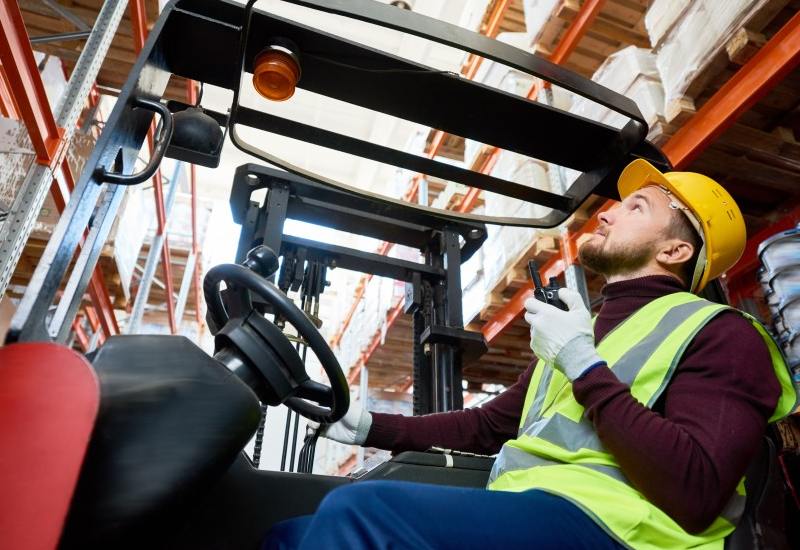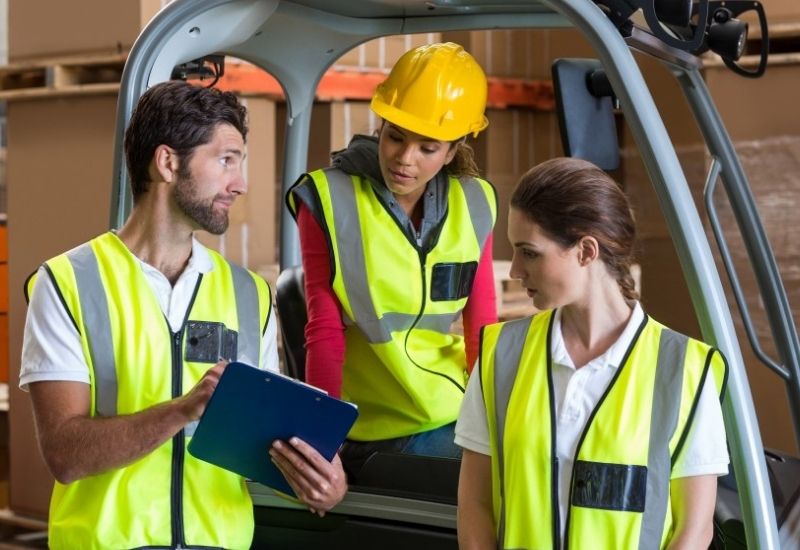
Forklift tip overs can be a frightening experience. If you are a forklift operator, it is important to know what to do in the event of a tip over.
If the forklift does roll your first reaction may be to jump. Don’t! Unfortunately, this is most likely to result in serious crush injuries or death.
How to Avoid Serious Injury?
If you are in a situation where the forklift is tipping over, you should:
- remain seated and don’t lean out of the forklift
- brace your feet, hold tight and lean away from the point of impact
- make sure you are stable by holding onto the steering wheel
Understanding why a forklift can tip over sideways or forward can help you prevent a tip over.
Sideways Tip Over
Here are some of the most common causes of lateral instability, which can cause a forklift to tip sideways:
- Turning a corner too quickly
- Cornering with a load that’s raised too high on the mast
- Turning the truck whilst on an incline
- Driving over forklift tip-over hazards or obstacles or running into a pothole
- Lifting a load while putting on a slope
- carrying a load that’s in motion ie. moving or busy
The challenge for the operator in these instances is that they may have little control once the tipping momentum has started. However, modern forklifts are equipped with some advanced features designed to detect tipping movement and stop the forklift in time.
An example of this is an overload protection device, which compares the weight of the load against the pre-set maximum carrying capacity for that lift truck. If it detects an increase in weight, it will actuate (apply) the brakes on that side of the lift truck before the operator can react – resulting in a safe, controlled stop.
Forward Tip Over
When the manufacturer’s recommended maximum weight is exceeded, a forward tip-over might occur, which can cause the lift to become unbalanced and dangerous. The forklift operator must ensure that the load is properly balanced and within the manufacturer’s recommended weight limit at all times.
Longitudinal tip-overs occur when the forklift center of gravity has shifted resulting in instability. Listed below are some common causes:
- Carrying a load that exceeds the recommended rating for your truck
- Lifting the load using the mast tilting forward (which may happen while the vehicle is positioned on an incline)
- Accelerating or flying overly harshly can push the center of gravity too far back or forward
- Lifting or lowering a load while still on an incline
- Collisions with overhead barriers
- Carrying loads Which Are active or moving
As for Sideways Tip Over, the forklift operator may not have time to initiate corrective action and avoid forklift tip overs. In which case the operator must remain in the forklift and brace for impact and hope to avoid serious injury.
Causes of Forklift Tip Overs
Poor driving – this includes;
- speeding
- risky maneuvers such as traveling at high speeds along an incline
- turning sharply or cornering too quickly
- Loading and unloading too fast, resulting in a center of gravity too high
Bad road conditions – Uneven terrain and obstacles such as low-hanging branches or overhead wires can hinder a forklift’s stability and cause it to tip over.
Mechanical failures – this includes;
- engine failure
- electrical system problems and/or hydraulic fluid leakage can all lead to tipping
Driving tips for Forklift Operators
- Wear a seat belt. Seat belts save lives.
- When traveling downhill, maintain a low speed and steer carefully. Don’t accelerate suddenly – keep a steady pace rather than trying to keep up with the rest of the traffic.
- When approaching a bend in the road, slow down and use your steering wheel
- Avoid sudden acceleration and braking – control your speed and drive steady
- Never turn sideways on ramps or other sloping surfaces
- Before making any turns, slow down and look all around you for hazards such as pedestrians or other forklifts that could cross your path. Make sure the way is clear and then turn, don’t stop
- Avoid driving on an incline with the load facing downhill
- Unless you’re picking up or putting away a load, don’t drive with an elevated mast and load
- With any electric forklift, check the battery level regularly to ensure it will not cut out unexpectedly. If your forklift does cut out while driving your best option is to try and steer away from danger before coming to a halt
- Ensure all loads are secured and centered
If you have any doubts about your ability to drive safely, have a co-worker take over for you.
The Importance of Wearing a Seat Belt
When operating a forklift, wearing a seatbelt is the most important safety precaution that worker can take. Every day, seatbelts save lives and prevent injuries.
It’s easy to forget to put on your seatbelt, however doing so may save you from harm. Wearing a seatbelt greatly reduces the risk of injury or death in the event of an accident.
OSHA can and has imposed significant penalties on businesses where operators have not used seatbelts. It is the responsibility of the employer to provide a safe working environment for its workers, and ensuring the use of appropriate safety equipment is one way to meet that obligation.
Drive defensively – your safety comes first!
ABOUT

Hi, and welcome to ForkliftTrainingZone.com. This website was set up to provide a useful resource for people interested in obtaining a commercial Forklift drivers license. We’ve tried to create an easy to use website and put all the information you need in one place. ForkliftTrainingZone.com provides an overview of the basic training requirements and costs for certifying to drive and operate a Forklift truck, useful information about Forklift job opportunities, job and career potential for people with Forklift certification, and much more. If you have any suggestions about anything you’d like added to ForkliftTrainingZone.com, please contact us via our contact page. Alternatively please feel free to check out one of these informative posts.
Click to read on

